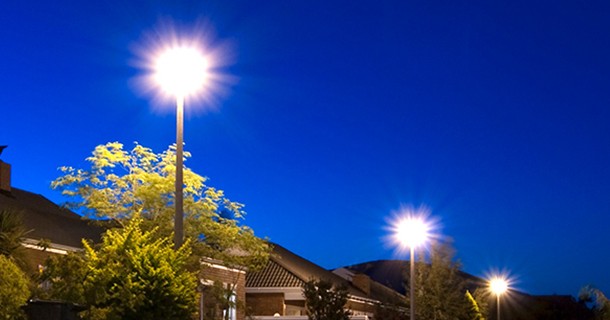Energy-Saving Tips
Everyone likes to save money. We've compiled a list of simple tips to help you save on energy and keep your bill as low as possible, while also helping protect the environment.
HVAC
- For greater HVAC system efficiency, clean and maintain its mechanical parts. Check for dirty coils and filters that restrict air flow.
- Provide all air handling units with an economizer with enthalpy control. Applications include all areas and buildings that can use outside air for "free cooling" during a significant portion of the year.
- Install variable speed drives on pumps and fans to control their speeds and to save energy.
- Changing from a terminal reheat system, which provides good thermal comfort but is known for its poor energy efficiency, to a variable air volume system can have significant savings.
- Reduce pumping power in cooling systems by eliminating bypass valves and three-way valves, removing auto flow valves, pressure regulating valves and other flow restrictors, and opening balancing valves at the pump.
- Cooling towers are one of the most overlooked opportunities for saving energy in cooling plants. Cooling tower technology has improved over the last 10 years. The average tower operates at about 0.12 kW/ton, while new, efficient, plastic-filled, counterflow towers can perform at 0.01 kW/ton (10 times more efficient).
- When practical, recover and reuse waste heat from air conditioning and refrigeration equipment. Waste heat capturing equipment includes hot gas desuperheaters, double-bundle condensers and auxiliary condensers.
Boilers
- Inspect and maintain boilers. The costs of properly maintaining boilers are fully recovered in fuel savings. To ensure peak efficiency, remove scale, replace leaky tubes and flanges, replace damaged insulation and control linkages and recalibrate controls.
- Install a boiler economizer. The installation of an economizer can increase the efficiency of a boiler by 2 to 3 percent. If there is a need for process heat within an operation, a heat reclaimer can be installed in the boiler stack instead of an economizer.
- On any large boiler, use a blow-down heat exchanger to preheat the makeup water going to the deaerator.
- Repair or replace boiler insulation. It may not be worthwhile to add to existing insulation, but old, damaged or missing insulation should be repaired or replaced.
Building Envelope & Windows
- Add roof insulation, including a vapor barrier. This is one of the most cost-effective energy conservation measures available.
- Fix air leaks. Seventy-five percent of a building's total air loss is from small leaks. Seal electrical outlets and gaps between moldings, as well as plumbing and wiring penetrations. Attic checkpoints include hatches, plumbing vents, chimneys and other roof or wall penetrations. Many areas can be sealed with a caulk gun and tubes of silicone or urethane caulking. For larger areas, foam sealants may work best. Outlet plugs and foam pads that are installed behind outlet and switch covers are wise investments.
- Add window films to reduce heat gain; therefore, reducing air conditioning.
Water Heating
- Install low-flow faucets, showerheads and dishwashing equipment.
- Reduce the water pressure. Have a plumber install a pressure-reducing valve on the main service when water pressure exceeds 40 to 50 pounds. This valve will restrict the amount of hot water that flows from a tap.
- Placing multiple water heaters close to usage points is more economical than using one central tank with long runs of pipes.
- Reduce water temperature to the minimum levels required for washing hands – usually 105°F. Boost water temperature locally for kitchens and other needed areas.
General/Miscellaneous
- Insulate exposed, hot-water, steam and chilled-water distribution piping where feasible.
- Ensure that all equipment (old and new) is operated correctly by trained personnel on an ongoing basis. Keeping equipment maintained doesn't cost, it pays.
- Encourage employees to turn off computers, monitors, printers, copiers and other devices when they are not being used. Consider equipping computers with devices that turn them off automatically after a set period of inactivity.
- Upgrade vending machines to ENERGY STAR® qualified machines. They use about 40 percent less energy than standard vending machines.



